Guides
Caroline Raspberry Care Guide: Grow Thornless Berries Easily
Raspberries are a true delight in any garden – whether you’re picking them fresh from the vine, making a homemade jam, or simply adding them to your favorite desserts. But if you’ve ever had the frustration of dealing with thorny canes and untamed vines, it might have made you hesitant to try again. Here’s where the Caroline Raspberry comes to your rescue! This thornless variety offers all the rewards of raspberry growing without the prickly hassle. Plus, it’s sweet, productive, and very easy to grow.
Whether you’re new to gardening or you’re looking to add a more low-maintenance berry to your backyard, this guide is here to help you grow the best Caroline raspberries with ease. I’ll take you through every step, from planting to harvesting, while sharing practical tips to keep your plant healthy and happy all year long.
What is the Caroline Raspberry?
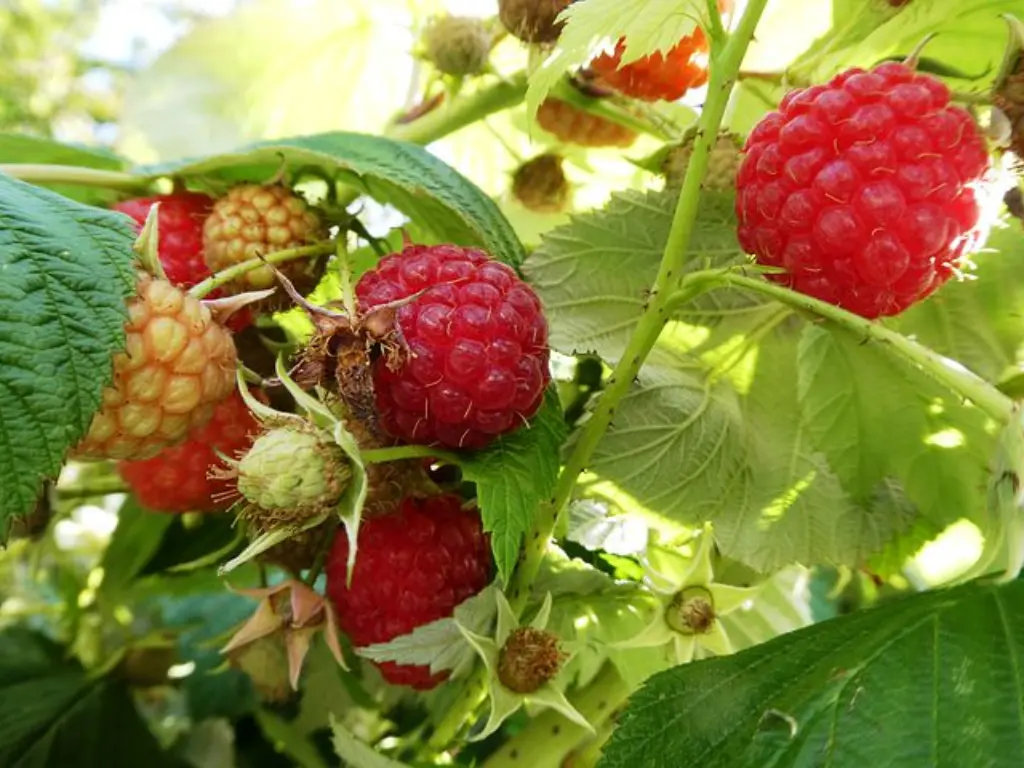
The Caroline Raspberry is a fantastic variety that’s perfect for both seasoned gardeners and newbies alike. Imagine growing a raspberry plant that doesn’t come with a whole bunch of thorns — it’s like a dream come true! These berries are not only thornless but also packed with flavor. Their sweet-tart taste makes them perfect for fresh eating, desserts, smoothies, and preserves.
What makes Caroline raspberries unique? Well, they are primocane-bearing, meaning they bear fruit on first-year canes, making for an even quicker harvest. You’ll get a crop in the same year you plant them, and that’s a big win for impatient gardeners!
Key Features:
-
Botanical Name: Rubus idaeus ‘Caroline’
-
Mature Size: 3-5 feet tall, 2-3 feet wide
-
USDA Growing Zones: 4-8
-
Days to Maturity: 1-2 years after planting
-
Type: Thornless red raspberry
-
Thornless: No need for gloves—yay!
-
Compact Growth: Ideal for small spaces or container gardening
-
Self-Pollinating: One plant is all you need
-
Fruit Season: Late summer to early fall (typically August to September)
Planting Caroline Raspberry
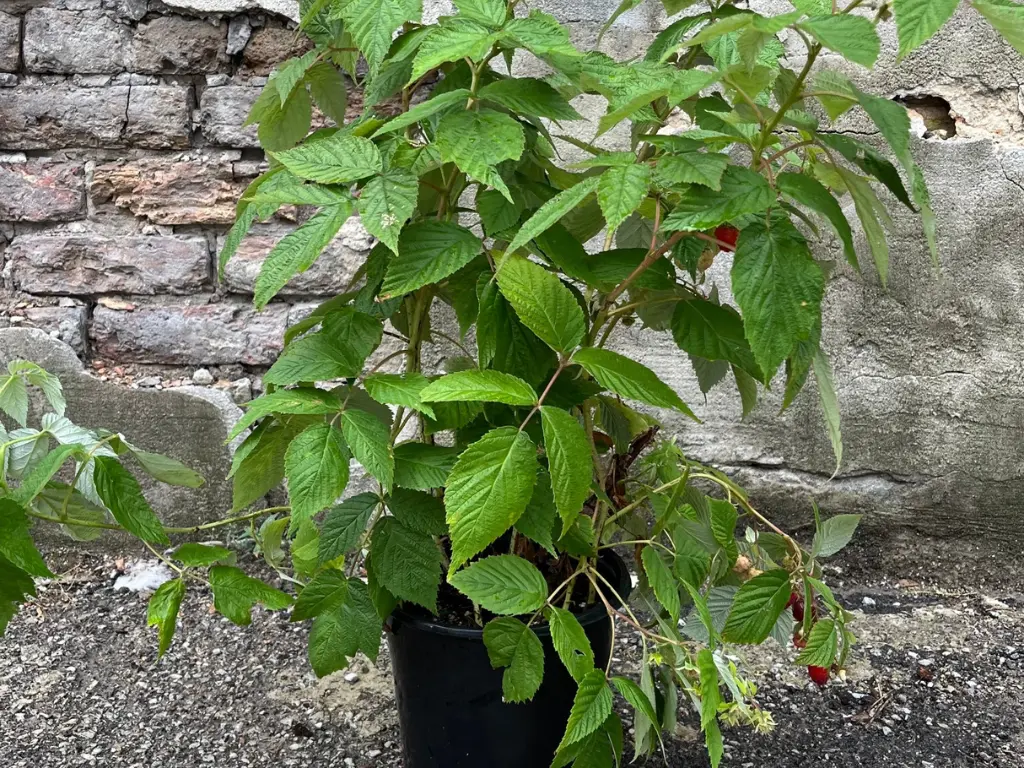
Best Time to Plant Caroline Raspberry
Timing your planting is key to getting the most out of your Caroline raspberries. The best time to plant is either early spring or fall, when the weather is mild and the ground is workable. Planting during these seasons allows your plants to establish strong roots before extreme weather sets in. Early spring planting gives your plants time to grow vigorously throughout the season, while fall planting gives them a head start before the next growing season.
Choosing the Right Location
Raspberries are sun-loving plants, and Caroline raspberries are no exception. These beauties thrive when they get 6-8 hours of direct sunlight per day. If you live in a particularly hot area, a little afternoon shade can help protect the plants from scorching sun. The more light they get, the better they’ll perform!
Don’t forget about wind protection. While raspberries aren’t overly fussy, strong winds can damage delicate canes or cause them to dry out too quickly. If you’re planting near a fence, use it as a natural windbreak.
Soil Preparation
Healthy soil is the foundation of a happy raspberry plant. Caroline raspberries prefer slightly acidic soil with a pH level between 6.0 and 6.5, though they’re generally adaptable. Loamy or sandy soils with good drainage are perfect for these plants.
If you have clay-heavy soil or poor drainage, consider amending it with organic compost or aged manure to improve texture and promote proper drainage. If you’re not sure about the soil’s pH, it’s easy to pick up a pH testing kit at a local garden center to ensure it’s just right.
How to Plant Caroline Raspberry
Here’s how you can plant your Caroline raspberry:
-
Dig a Hole: Make the hole about twice as wide and deep as the root ball of your raspberry.
-
Place the Plant: Set the plant in the hole so that the crown (where the stem meets the roots) is level with the surrounding soil.
-
Fill and Tamp: Gently backfill with soil and lightly tamp down to remove air pockets around the roots.
-
Water: After planting, give your raspberry a good watering to help settle the soil and reduce transplant shock.
-
Mulch: Add a 2-3 inch layer of mulch around the base to conserve moisture, regulate soil temperature, and suppress weeds.
Container Planting Tips
No garden? No problem! Caroline raspberries thrive in containers, making them perfect for patios, balconies, or small urban spaces. For container planting:
-
Choose a Large Pot: Use a pot that’s at least 5 gallons in size and ensure it has drainage holes to prevent waterlogging.
-
Use Well-Draining Soil: A mix of potting soil, compost, and perlite or sand will keep the roots happy and healthy.
-
Support Your Plants: As your raspberries grow, give them something to lean on. A small trellis, tomato cage, or stake can help support the canes.
Caroline Raspberry Care
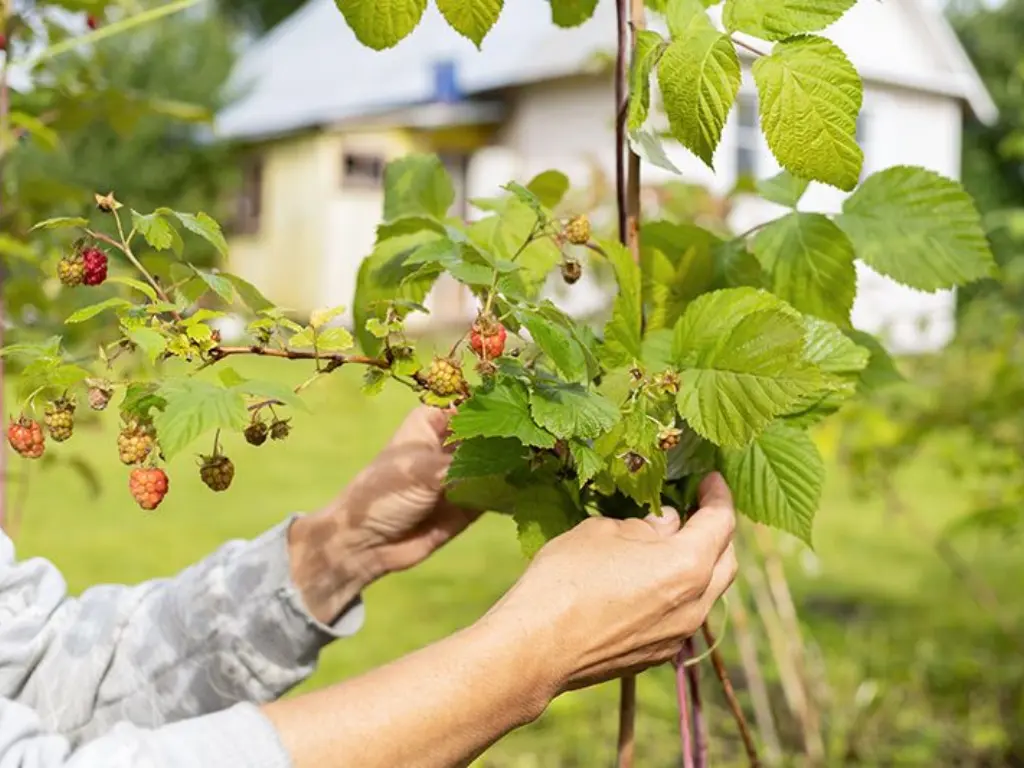
With just a little TLC, your Caroline raspberries will thrive. Here are some tips for keeping them healthy and productive throughout the year.
Watering
Raspberries need regular watering, especially when they’re establishing roots. However, they don’t like sitting in soggy soil. Deep watering is better than shallow watering, as it encourages the roots to grow deeper. Aim to water 1-2 times a week, but keep an eye on the weather. During hot, dry spells, you may need to water more often.
Fertilizing
Feed your raspberries with a balanced fertilizer that’s high in potassium and phosphorus, such as a 10-10-10 formula. Early in the spring, fertilize your plants to jump-start their growth. After fruiting, you can give them a second round of fertilizer to help them recover and get ready for next season.
For organic gardeners, compost or fish emulsion is a great natural alternative. Just make sure to avoid over-fertilizing, as this can lead to lush, green foliage but fewer berries!
Pruning or “Punching”
Pruning is essential for maintaining healthy, productive raspberry plants. Here’s the best way to handle it:
-
All-in Pruning: Since Caroline raspberries bear fruit on first-year canes, the simplest approach is to cut all the canes down to the ground after you harvest. This gives your plant a fresh start each year.
-
Selective Pruning: If you’d like a bit of structure, prune dead or weak canes in spring, and leave healthy ones to produce fruit. It’s a great way to give your plants a cleaner, more organized appearance.
Seasonal Plant Care Tips
-
Spring: Apply mulch around the base to retain moisture and keep weeds at bay. Also, prune any dead or damaged canes.
-
Summer: Watch out for pests, and keep your plants well-watered during dry spells.
-
Fall: After harvest, clean up plant debris and prune the canes. Add another layer of mulch to prepare your plants for winter.
-
Winter: For plants in colder climates, protect the roots by adding an extra layer of mulch or straw to insulate the base of the plant.
Potting and Repotting
Raspberries in containers need to be repotted every 2-3 years, especially if they’re becoming root-bound. When repotting, choose a pot that’s a few inches larger than the previous one, and refresh the soil to provide fresh nutrients.
How to Propagate Caroline Raspberry
Propagating raspberries is a simple and rewarding way to expand your berry patch. There are a couple of methods to do this:
-
Tip Layering: In early spring, bend a healthy cane down so that the tip touches the soil. Secure the tip in place with a small stone or pin, and it will root in the soil. Once it’s well-established, cut it from the main plant and transplant it.
-
Root Division: For larger, established plants, dig up the root clump in early spring, carefully divide it into smaller sections with a healthy bud or cane attached, and replant them.
Both of these methods work great for multiplying your harvest!
You may like:
How to Get Caroline Raspberry to Bloom
Caroline raspberries typically bloom in late spring to early summer. To help your plant bloom profusely, make sure it gets enough sunlight (6-8 hours per day). If your plants are not blooming, it could be because they’re not getting enough light, or they may need more balanced fertilizer.
Be mindful of your pruning routine. Over-pruning can delay flowering, so only trim dead or damaged canes when necessary.
Harvesting and Storing Caroline Raspberries
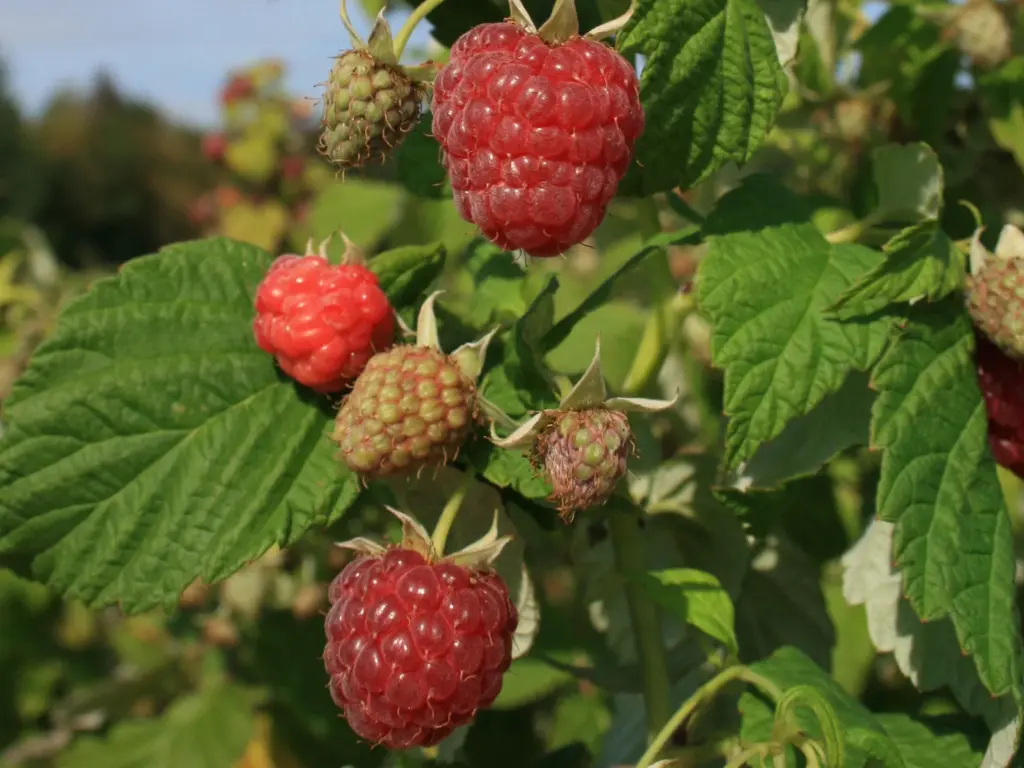
When ripe, Caroline raspberries are a vibrant, deep red. They’re best harvested when they come off the cane easily with just a gentle tug. Don’t wait too long, though, as raspberries can spoil quickly.
Storage Tips:
-
Fresh berries will last about 3-5 days in the fridge, but they taste best when eaten immediately after picking.
-
Freezing raspberries? Lay them out on a tray in a single layer to freeze individually before transferring them to airtight bags. This way, they won’t clump together.
Troubleshooting Caroline Raspberries
Common Problems:
-
Yellowing Leaves: Usually caused by poor drainage or overwatering. Ensure the soil drains well, and avoid letting the plant sit in soggy soil.
-
Small Berries: Likely a sign your plant needs more sun or nutrition. Ensure it’s getting enough light, and add some fertilizer to boost fruit production.
Pests and Diseases:
-
Spider Mites and Aphids: These can be controlled with neem oil or insecticidal soap.
-
Japanese Beetles: Handpick them in the morning or use a targeted treatment with insecticidal soap.
-
Verticillium Wilt: Prevent this disease by rotating crops and avoiding planting raspberries near other members of the nightshade family.
Frequently Asked Questions (FAQs)
-
Are Caroline Raspberries Self-Pollinating?
Yes, they’re self-pollinating, so you only need one plant to get a full harvest. -
Can I Grow Caroline Raspberries Indoors?
While they do best outdoors, you can grow them indoors in large containers with proper sunlight (a south-facing window is ideal). -
How Much Space Do They Need?
Each plant should be spaced about 2-3 feet apart. You can plant them closer in containers but ensure they have enough space to spread out. -
How Quickly Do They Fruit?
Caroline raspberries are a primocane variety, so you’ll likely see fruit in the same year you plant them—usually within 1-2 years after planting. -
How Tall Do Caroline Raspberries Grow?
Caroline raspberries typically grow between 3 to 5 feet tall, with a spread of about 2 to 3 feet wide. They have a compact growth habit compared to other raspberry varieties, making them ideal for small spaces or container gardening. You can also prune them to maintain a smaller size if needed!
Final Thoughts
With their delightful sweet-tart berries, ease of care, and thornless canes, Caroline raspberries are an excellent choice for any gardener. Follow this care guide, and you’ll have a thriving berry patch in no time!
So, grab your gardening gloves (if you want, but you won’t need them for this variety!) and start planting your own delicious crop of Caroline raspberries today! Happy gardening!
Read more:

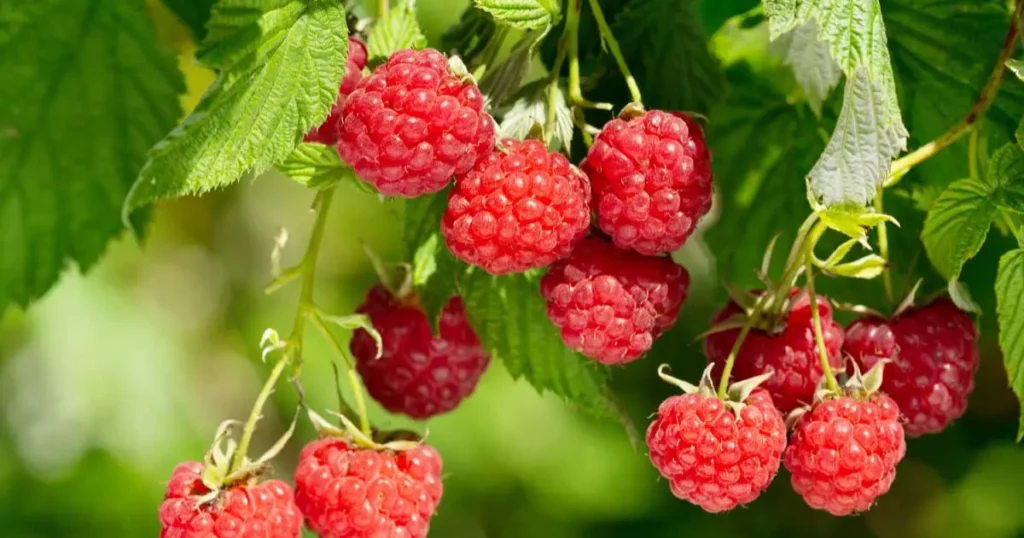
Swedish Ivy Care: How to Grow a Healthy, Thriving Plant
Have you ever looked at your Swedish Ivy and wondered why the leaves are turning [...]
Nov
Avoid These 10 Garlic Planting Mistakes for Bigger, Healthier Bulbs
Growing garlic at home is one of the most satisfying things a gardener can do [...]
Nov
How to Prevent Christmas Cactus Bud Drop: Tips for a Healthy Bloom
Have you ever noticed your beautiful Christmas cactus (Schlumbergera) starting to lose its buds just [...]
Nov
Discover 7 Stunning Types of Night-Blooming Cereus
Have you ever waited for a flower that only opens at night and then disappears [...]
Nov
How to Propagate Comfrey from Root Cuttings: Easy Guide for Beginners
If you’re looking to grow your own healthy comfrey plants without spending too much, propagating [...]
Nov
10 Best Christmas Plants to Gift This Holiday Season
The holiday season is finally upon us, and if you’re searching for the perfect gift [...]
Oct